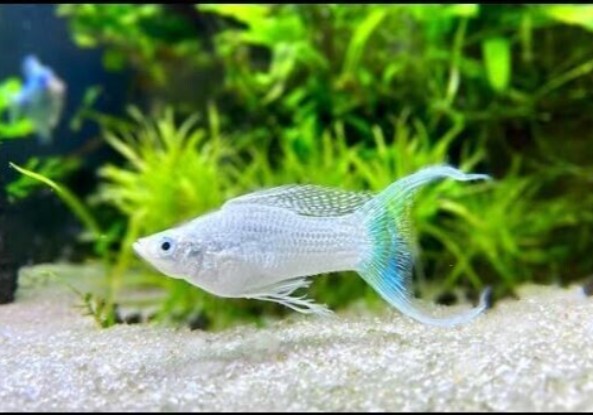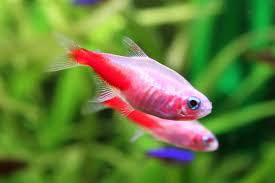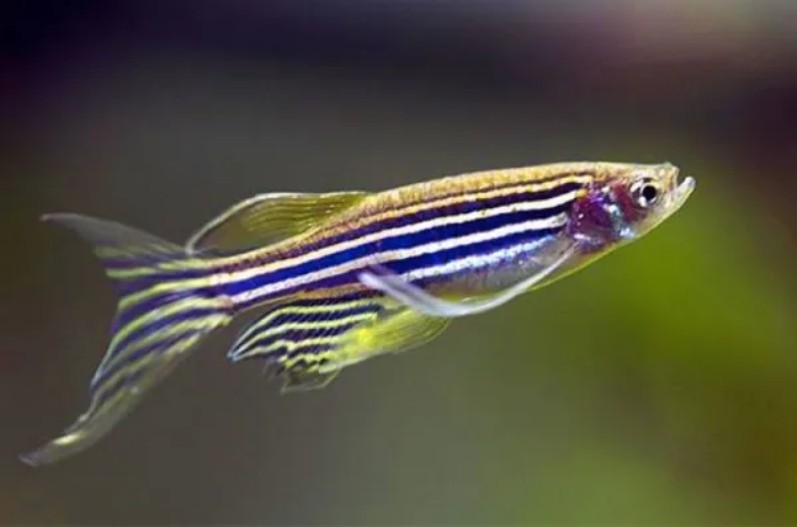The Right Freshwater Aquarium Fish for Kids: A Simple Guide for Parents
Introducing children to the world of aquariums can be an exciting and educational experience. Setting up a freshwater tank is not only comparatively easier than a saltwater tank, but it also offers a wide range of colorful and unique fish species suitable for kids. Choosing the right fish for your child’s aquarium is crucial for their success and enjoyment in fishkeeping.

When selecting the ideal fish for your child’s tank, consider factors such as the fish’s hardiness, compatibility with other species, and ease of care. It’s important to choose fish that can easily adapt to their new environment and thrive with minimal maintenance. Some great options for beginners include Neon Tetras, Guppies, and Molly Fish.
Before purchasing any fish, it’s essential to properly set up their aquarium and research the specific needs and preferences of each species. This ensures a healthy, happy, and thriving environment for the fish, as well as a rewarding experience for your child. When it comes to picking out fish for a newly set up aquarium, the choices you make will have a significant impact on your success. With a little research and the right selection of fish, your child’s freshwater aquarium can become a fascinating and engaging learning tool.
Choosing the Right Aquarium
Aquarium Size and Shape
When selecting a freshwater aquarium for kids, it’s important to consider the size and shape of the tank. The number of fish the aquarium can comfortably hold depends on its size 1. A general rule to follow is one inch of fish per gallon of water, but it’s not just volume that matters, the aquarium shape and dimensions also play a role. A larger surface area allows for better oxygen exchange, which is essential for the fish’s well-being. Understand your available space and, if possible, opt for tanks with wider and longer dimensions rather than taller ones.
Aquarium Material: Glass Vs Acrylic
There are two primary materials used for aquariums: glass and acrylic. Both materials have their pros and cons, and the choice between them will largely depend on personal preference and budget. Glass aquariums are generally more affordable and less likely to scratch. However, they can be heavier and may distort the view slightly. On the other hand, acrylic aquariums are lighter, more durable, and provide a clearer view of the fish inside 2. They also have a lower risk of chipping or breaking, making them a safer choice for kids. The downside is that they are more prone to scratching and can be more expensive.
Role of Aquarium Cover and Stand
Choosing the right aquarium cover and stand is also crucial for the safety and functionality of your child’s new fish tank. The cover not only reduces evaporation but also protects the fish from potential hazards such as curious hands. Ensure the cover fits securely and has openings for essential equipment such as a filter system, while also providing easy access for feeding and maintenance. A sturdy aquarium stand keeps the tank at an appropriate height for the children to enjoy and safely supports the weight of the filled tank. Opt for one specifically designed for aquariums and make sure it’s compatible with the size and shape of your chosen tank.
The Right Freshwater Aquarium Fish for Kids – Setting Up the Aquarium Environment
Importance of Substrate and Decorations
When setting up an aquarium for kids, it’s crucial to consider the substrate and decorations to create a comfortable environment for the fish. The substrate is important for the fish’s wellbeing and can also serve as a foundation for proper bacterial growth. Different types of substrates, such as gravel or sand, can help cater to the specific needs of the freshwater fish. Additionally, decorations are necessary as they provide hiding spots and areas for fish to explore, making their environment more enjoyable.
Maintaining Proper Light and pH Levels
Maintaining proper light and pH levels is essential for a healthy freshwater aquarium environment. Finding the right balance of light ensures that fish and plants receive suitable sunlight. Avoid placing the aquarium in direct sunlight to prevent excessive algae growth and temperature fluctuations. For pH management, different freshwater species require different pH levels; be sure to research your chosen fish types beforehand. Using a reliable water test kit will allow you to monitor the pH levels and make adjustments accordingly.
Establishing the Nitrogen Cycle
The nitrogen cycle is a critical process that enables the conversion of harmful ammonia into nitrite and then into less harmful nitrate. To establish a proper nitrogen cycle, start by setting up a filter system suitable for your aquarium size. You can introduce a small number of hardy, resilient fish to help kick-start the process, but regularly monitor ammonia, nitrite, and nitrate levels with a trusty water test kit. It’s important to wait for the nitrogen cycle to stabilize before adding more fish to your kids’ freshwater aquarium to ensure their wellbeing and a successful aquarium experience.
Essential Aquarium Equipment
Filters and Heaters
When setting up a freshwater aquarium for kids, it’s essential to have the right equipment to maintain a healthy environment for the fish. One of the most important pieces of equipment is a filter. Filters help remove impurities and maintain water quality, which is crucial for the well-being of the fish. There are several types of filters available, such as power filters, sponge filters, and canister filters. It’s essential to choose a filter suitable for your aquarium size and the type of fish you plan to keep.
Another important piece of equipment is the heater. Heaters help maintain a stable water temperature, essential for the survival of many tropical fish species. Make sure to pick a heater suitable for the size of your aquarium and maintain a consistent temperature within the recommended range for your fish species. A thermometer can also be handy in monitoring the water temperature.
Aquarium Nets and Cleaning Tools
Another essential aspect of aquarium maintenance is regular cleaning. Having the right tools can make this task much easier and more enjoyable for kids. Aquarium nets are necessary for catching fish when you need to transfer them for tank maintenance or during emergencies. They come in different sizes and shapes, so pick a net appropriate for the size of your fish and the area of your tank.
Cleaning tools, such as algae scrapers, gravel vacuums, and brushes, play a significant role in keeping the tank clean and healthy. Regular cleaning will help prevent algae buildup and maintain good water quality. It is also essential to use a water conditioner when adding fresh water to the tank to neutralize harmful chemicals like chlorine.
We hope this information helps you select the essential aquarium equipment for setting up a freshwater aquarium for kids. With the right tools and knowledge, maintaining an aquarium can be an educational and enjoyable experience for children.
The Right Freshwater Aquarium Fish for Kids – Selection
Distinguishing Between Freshwater and Saltwater Fish
When choosing fish for a kids’ aquarium, it’s important to first understand the difference between freshwater and saltwater fish. Freshwater fish are typically much easier to maintain and come in a variety of colorful and active species that are perfect for young enthusiasts. In contrast, saltwater fish require more expertise and care, so it’s best to stick with freshwater varieties for beginners.
Active and Peaceful Fish
Considering the temperament of the fish is crucial for a successful and harmonious aquarium. Active and hardy fish, such as barbs, are great additions to a kid’s aquarium as they can coexist with other suitably sized species and are easy to care for. Another excellent option is killifish, which are brilliantly colored, highly active, and adaptable to various tank setups.

Colorful and Patterned Fish
One of the main reasons children enjoy aquariums is the fascinating array of colors and patterns exhibited by different fish species. Including visually captivating fish can pique a child’s interest in aquatic life and foster a sense of responsibility in maintaining their environment. Some examples of vividly colored freshwater fish include guppies, neon tetras, and bettas. These fish not only add a beautiful aesthetic to the tank but also contribute to an engaging underwater environment.
Hardy and Low Maintenance Fish
Finally, it’s important to select fish that are easy to care for, especially when introducing children to aquarium maintenance. Hardy and low-maintenance fish are more forgiving of beginner mistakes and can thrive in various aquarium conditions. Examples include platies, mollies, and corydoras catfish. These fish are ideal for kids since they require less specialized care, allowing young aquarists to learn the basics of aquarium management without being overwhelmed.
The Right Freshwater Aquarium Fish for Kids – Care and Maintenance
Feeding the Fish
One of the important aspects of fish care is providing them with a proper diet. Generally, fish can be fed a combination of dry and frozen foods. It’s essential to ensure the food is of good quality to keep your fish healthy. We recommend Caring for Baby Fish: Keeping, Feeding, and Survival, a guide that will help you to understand the feeding needs of baby fish and how to provide the best possible nutrition for their growth.
Be cautious not to overfeed your fish, as it can lead to poor water quality and potential health issues. A good practice is to feed them small amounts multiple times a day, ensuring they consume the food within a few minutes.
Performing Regular Water Changes
Maintaining a clean and stable aquarium environment is crucial to the well-being of your fish. Performing regular water changes helps to keep the water clean and the fish healthy. We typically recommend changing about 10-20% of the aquarium water every week.
During the water change process, take the time to remove any algae buildup from the glass, decorations, and other aquarium surfaces. Algae removal will help maintain a beautiful aquarium and contribute to the overall health of the aquatic environment.
Understanding Fish Diseases
A critical aspect of fish care is being able to identify and treat common fish diseases. Some common diseases affecting freshwater fish include Ich, fin rot, and dropsy. When treating a fish disease, it’s essential to be knowledgeable and confident in identifying the symptoms and providing appropriate treatment.
While some fish are relatively easy to care for, others may require more attention to prevent illness. By understanding fish diseases and maintaining proper tank conditions through appropriate feeding and water changes, you can ensure your fish stay healthy and vibrant as they grow.
Popular Kid-Friendly Fish
Neon Tetra
Neon Tetras are a fantastic choice for children, as they are colorful and easy to care for. These small fish showcase a silvery-blue appearance and a distinctive bright red stripe. They are shoaling fish that look captivating when swimming in a group. Neon Tetras require a stable environment with good water quality, making them excellent for teaching your kids the basics of fishkeeping.
Goldfish
Goldfish are perhaps the most classic choice for a kid-friendly aquarium. These fish are hardy, adaptable, and come in various colors and shapes. They are relatively low-maintenance, which makes them suitable for beginners. However, they can grow quite large and produce abundant waste, meaning they need a spacious tank and a good filtration system. To keep your goldfish healthy, click here for more information on proper care.
Molly Fish
Molly Fish are another colorful option for a child’s aquarium. These fish are native to the American South, Central and South America, and adapt well to community tanks. They thrive in slightly warmer freshwater environments and love to have plants in their tank to hide and explore. Their adjustable nature and compatibility with other fish species make them a fantastic choice for kids.
Zebra Danio
Zebra Danios, also known as Zebrafish, are a popular choice for kids’ aquariums because of their playful nature and striking horizontal stripes. These small, fast-swimming fish are robust and straightforward to care for. They are also perfect for beginners as they adapt well to various water conditions. One important aspect to remember is that Zebra Danios are social fish and should be kept in a group of at least five to enhance their well-being.
By providing kids with these colorful and low-maintenance fish, you’ll help them develop a sense of responsibility and foster a lifelong fascination with the captivating world of aquatic life.
The Right Freshwater Aquarium Fish for Kids – Wrap Up
We believe that buying the right freshwater aquarium fish for kids can be a great opportunity to teach responsibility and foster an appreciation for aquatic life. By starting with a tank size of at least 10 gallons, we can ensure that the fish have enough space to thrive, while also not overwhelming the child with a massive aquarium. Larger tanks (20-gallons or more) are ideal for beginners, but the ultimate decision should be based on available space and finances. To set up the aquarium properly, it is important to maintain the right temperature, usually between 75 and 80 degrees, for tropical fish and to keep it free of algae.
Selecting the appropriate pet fish for kids is a crucial step. One popular option is the Neon Tetra, which is colorful, easy to care for, and displays a captivating appearance. These fish are ideal for teaching kids the basics of fishkeeping without requiring excessive maintenance. Moreover, freshwater fish are generally easier to care for than saltwater fish, making them more suitable for children.
As we introduce new fish to the aquarium, it is essential to allow at least 48 hours after setting up the tank before adding any fish. This waiting period ensures that the environment is stable and safe for our new aquatic pets. When teaching kids how to care for their pet fish, patience and guidance are necessary.
Ultimately, owning a freshwater aquarium can be a rewarding and educational experience for children. With the right guidance, dedication, and fish selection, kids can learn valuable life lessons and develop a passion for the fascinating world of aquatic creatures.
The Right Freshwater Aquarium Fish for Kids – FAQs
What are the easiest fish species for children to care for?
Guppies are an excellent choice for children as they are colorful, easy to care for, and are known for their hardy nature. They can adapt to various water conditions, making them a great choice for beginners. The Guppies are sometimes called “Rainbow Fish” due to their vibrant colors, which kids find captivating.
How can I choose the most suitable fish for my child?
When selecting fish for your child, consider factors such as the required tank size, compatibility with other fish species, and their dietary preferences. Asking the right questions before purchasing the fish, such as the fish’s adult size and diet, will help in choosing the right pet fish.
What are the best fish for small tanks?
Small tanks can house a variety of fish species, such as guppies, bettas, and tetras. However, it is essential to consider the fish’s size, temperament, and compatibility with other tank mates. Always ensure that you do not overcrowd the tank, as it may lead to stress and poor water quality.
How to teach kids about aquarium maintenance?
Teaching kids about aquarium maintenance can begin with setting up the tank together. Walk them through the process of choosing the necessary equipment, such as the tank, heater, filter, and gravel. Show them how to test and maintain water quality, and involve them in tasks like water changes and filter cleanings. Also, make it a shared responsibility to feed the fish and monitor their health.
What type of fish tank is best for children?
Acrylic tanks are a suitable option for children, as they are lightweight, less prone to chipping or breaking, and do not distort the view as glass tanks can. However, they are more prone to scratches and can be more expensive than glass tanks. Acrylic tanks are recommended for their durability and safer nature for children.
What safety precautions should be taken for a kid’s fish tank?
Ensure the fish tank is placed on a sturdy surface, out of reach of younger siblings or pets. Secure the tank’s electrical components, such as the heater and filter, to prevent accidents. Teach your child about the importance of not overfeeding the fish and maintaining proper water quality to avoid health issues. Make sure kids wash their hands thoroughly after handling any aquarium items or fish.
